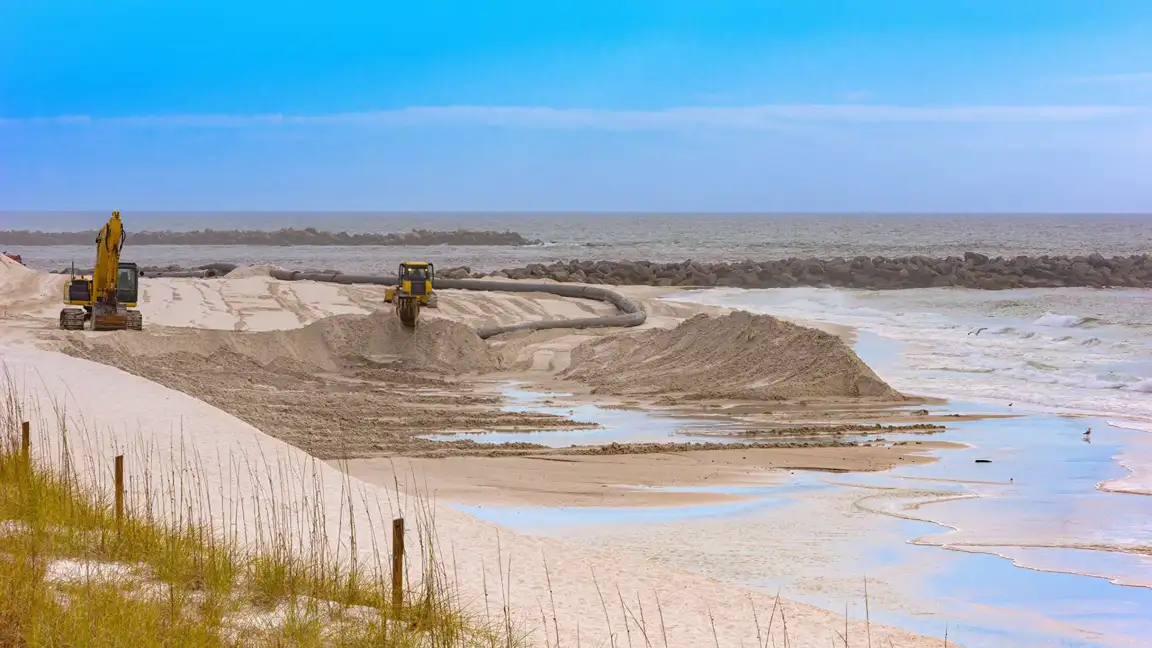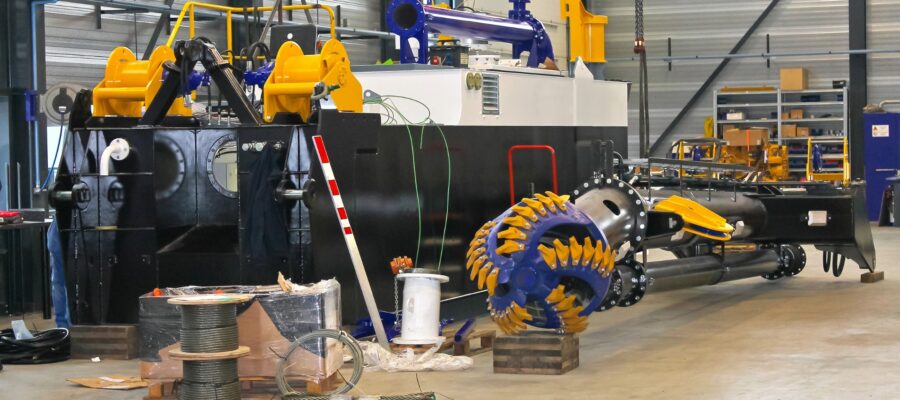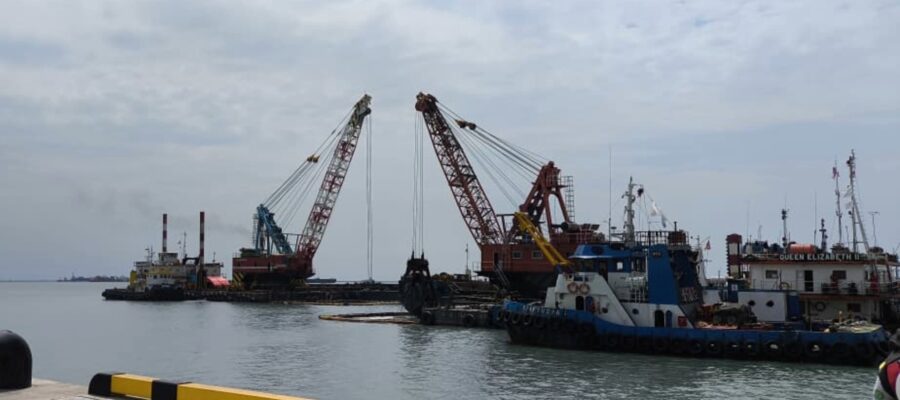
Introduction
Dredging projects serve as the backbone of coastal protection, flood prevention, navigational maintenance, and ecological restoration efforts worldwide. These initiatives are essential for preserving natural waterways, supporting commercial shipping, and mitigating the impact of climate change. However, the inherent complexity of such operations cannot be overstated. Multiple stakeholders, stringent environmental regulations, unpredictable geotechnical conditions, and the dynamic nature of aquatic environments contribute significantly to project challenges. Efficiently managing these intricate processes is critical to achieving successful outcomes on time, within budget, and with minimal environmental impact. The Nugget Lake dredging project provides a compelling case study in overcoming site-specific hurdles through a combination of innovation, stakeholder collaboration, and environmental stewardship. As companies explore dredging projects for bid, showcasing a proven ability to manage complexity becomes a distinct competitive edge. Demonstrating expertise in addressing diverse project challenges can differentiate contractors in the bidding process. Ultimately, well-executed projects deliver not only economic returns but also long-term environmental and social value across local and regional communities, enhancing their resilience to climate change and future risks.
Understanding the Complexities of Modern Dredging Projects
Modern dredging projects require far more than just heavy equipment and skilled labor—they demand systems-level thinking, cutting-edge technology, adaptive management, and seamless coordination among diverse stakeholders. These initiatives span a wide spectrum of goals, from maintaining navigational channels and supporting maritime trade to restoring ecological balance in lakes, wetlands, and coastal habitats. The complexity often involves stringent regulatory requirements, unpredictable soil and sediment profiles, and dynamic environmental factors such as tides, storms, seasonal weather, and aquatic life considerations.

For example, the Nugget Lake dredging project encountered multiple layers of difficulty, including restricted site access, fluctuating water levels, shifting weather conditions, and the imperative to protect sensitive aquatic ecosystems. These challenges required contingency planning, the adoption of innovative dredging methods, and coordinated efforts across engineering, environmental, and operational teams.
Contractors preparing for dredging projects for bid should use this critical phase not only to evaluate profitability but to assess potential execution risks thoroughly. Early identification of site-specific constraints, regulatory hurdles, and hidden costs enables them to craft proposals that are competitive, environmentally compliant, and operationally feasible. Comprehensive pre-planning supports more effective resource management, minimizes unforeseen disruptions, and fosters successful project delivery. Ultimately, this strategic groundwork results in smoother execution, reduced risks, and outcomes that align with both client expectations and long-term environmental objectives.
Pre-Planning and Feasibility Assessments
Pre-planning is often the most undervalued yet crucial phase of dredging projects, forming the strategic foundation upon which the entire operation is built. Early-stage feasibility assessments uncover potential red flags, such as contaminated sediments, endangered habitats, seasonal flooding risks, or logistical constraints, that can jeopardize a project if not addressed proactively. This phase also initiates stakeholder engagement, fostering early alignment between client expectations, regulatory requirements, community interests, and technical limitations.
For example, the Nugget Lake dredging project benefited significantly from a comprehensive pre-feasibility study that evaluated seasonal hydrology, sediment quality, access routes, and disposal site viability. These insights enabled the team to establish a realistic schedule and select the most efficient dredging method tailored to site conditions.
Contractors reviewing projects should leverage this phase not only to assess profitability but to gauge execution risk accurately. By identifying potential bottlenecks, environmental constraints, and hidden costs early on, they can craft proposals that are competitive, compliant, and realistic. Thorough pre-planning enables better resource allocation, mitigates unforeseen challenges, and lays a solid foundation for success. Ultimately, this process leads to smoother, more predictable projects that minimize disruption, reduce risks, and avoid costly mid-project adjustments, ensuring efficient execution and long-term successful outcomes.
Project Design and Technical Strategy
Designing a successful dredging project involves much more than selecting between cutter suction, trailing suction hopper, or backhoe dredgers. It requires a comprehensive understanding of site-specific factors such as hydrodynamics, sediment transport patterns, aquatic biodiversity, and regulatory frameworks. These elements must be carefully evaluated to craft a design strategy that not only meets immediate operational goals but also supports long-term ecological and structural stability. A robust dredging plan integrates sediment management, material transport logistics, shoreline stabilization, and even community engagement strategies. The selected equipment and methodologies must align with environmental sensitivities, ensuring minimal disruption to ecosystems and surrounding habitats.

In the Nugget Lake dredging project, engineers implemented a customized solution by choosing a portable, remotely operated hydraulic dredge. This choice was driven by the project’s proximity to sensitive wetland zones. Floating pipelines and geotextile dewatering bags were incorporated to reduce shoreline impact and manage sediment disposal efficiently. Additionally, real-time GPS and sonar systems were used to monitor dredging depth and sediment movement, increasing precision while reducing over-excavation.
When contractors prepare for dredging projects for bid, their technical strategy becomes a focal point of evaluation. Bidders who demonstrate innovative approaches—supported by engineering simulations, geospatial data, and sedimentation modeling—stand out as reliable and forward-thinking. More importantly, showcasing a commitment to sustainability, risk mitigation, and post-dredging restoration helps build trust with stakeholders and regulatory agencies. For complex, environmentally sensitive projects, a well-tailored, data-driven technical design can mean the difference between winning the contract and falling short.
Effective Project Management and Coordination
Strong project management is the cohesive force that integrates all operational, logistical, and regulatory aspects of dredging projects. It encompasses the coordination of schedules, budgets, workforce allocation, permitting processes, safety protocols, quality assurance standards, stakeholder communication, and timely reporting—all while remaining responsive to unforeseen disruptions such as equipment malfunctions, severe weather, material shortages, or compliance audits. Without robust management, even well-funded dredging projects can quickly spiral into delays and cost overruns.
In the Nugget Lake dredging project, coordination was especially critical due to fluctuating water levels and the diverse expectations of stakeholders ranging from regulatory bodies to residents. The project management team responded by implementing an agile scheduling approach and conducting weekly status updates with all subcontractors, engineers, and permitting agencies. This proactive communication strategy helped prevent misalignment and facilitated timely decision-making throughout the project lifecycle.
Firms pursuing dredging projects for bid must be prepared to present a clear and tested project management framework. This should highlight the use of digital collaboration platforms, contingency planning, stakeholder engagement tactics, and conflict resolution mechanisms. In complex dredging projects, where multiple agencies, contractors, and community groups intersect, effective coordination is the key to success. A well-managed project not only achieves deliverables and KPIs—it enhances organizational credibility, fosters long-term relationships, and positions the company favorably for future bidding opportunities.
Workforce and Contractor Management
Dredging projects require specialized skills that range from marine engineering and sediment analysis to heavy equipment operation and environmental monitoring. Assembling the right team—and managing it effectively—is fundamental to ensuring productivity and minimizing incidents. A project’s workforce must be trained not only in safety procedures and equipment handling but also in regulatory compliance and community engagement.
At the Nugget Lake dredging project, the workforce included certified operators, environmental scientists, and community liaison officers. This diverse team enabled the project to remain on schedule while effectively navigating environmental and social responsibilities.
Contractors bidding on dredging projects for bid should highlight their workforce development plans, showcasing certifications, safety records, and training programs. Labor mismanagement can lead to costly rework, environmental violations, or even litigation. Well-managed personnel create high-performance dredging projects where expertise, collaboration, and accountability converge to produce exceptional results. In a complex dredging project, people are not just a resource—they are the engine that drives success.
Environmental Compliance and Risk Mitigation
Environmental compliance is a cornerstone of modern dredging projects, especially those occurring near protected wetlands, coastal zones, or drinking water sources. Projects must comply with local, state, and federal regulations related to sediment disposal, aquatic species protection, noise pollution, water turbidity, and habitat preservation. Effective risk mitigation strategies often involve the use of containment curtains, adaptive scheduling, and real-time monitoring systems to minimize environmental impacts. These strategies help maintain project integrity while ensuring the protection of sensitive ecosystems.
The Nugget Lake dredging project integrated advanced environmental safeguards, including floating silt barriers, GPS-guided dredging paths, and daily turbidity testing to ensure compliance with environmental thresholds. These measures not only ensured the protection of local wildlife and aquatic habitats but also helped the team avoid regulatory delays and costly fines. By continuously monitoring environmental parameters, the project team was able to respond promptly to any issues, thereby preventing potential harm to the surrounding environment.
When pursuing dredging projects for bid, contractors must present a clear, proactive environmental management plan. Regulatory agencies and clients alike expect to see that potential ecological risks are anticipated, minimized, and controlled effectively. In today’s increasingly stringent regulatory landscape, non-compliance is not an option—it’s a significant liability that can jeopardize both the success of the project and the contractor’s reputation. Sustainable and compliant dredging projects not only contribute to environmental preservation but also ensure long-term credibility. This, in turn, opens doors to more ambitious contracts in sensitive and high-stakes environments, cementing the contractor’s reputation as a responsible and forward-thinking operator.
Cost Management and Value Engineering
Budget overruns are a common challenge in dredging projects, especially when unforeseen site conditions, environmental factors, or logistical delays arise. Effective cost management goes beyond just creating a budget—it involves continuous monitoring of expenses, proactive scenario planning, and applying value engineering throughout the project lifecycle. By making smart decisions about equipment selection, fuel usage, crew deployment, and waste disposal, contractors can reduce costs and improve overall financial performance, ensuring that dredging projects are completed within budget.

In the Nugget Lake dredging project, value engineering was instrumental in achieving cost savings. A significant change was the shift from traditional truck haulage of dredged sediment to floating barges. This adjustment not only reduced transportation costs but also minimized emissions, contributing to environmental sustainability. These changes were implemented without impacting the project’s scope or timeline, showing that cost efficiency and quality outcomes can coexist.
Contractors bidding on dredging projects for bids must clearly communicate their approach to cost control. This includes utilizing advanced financial tracking software, adopting procurement best practices, and incorporating lean construction principles to optimize efficiency. Transparent financial oversight fosters trust with clients and ensures that projects remain on track. Demonstrating a strong cost management strategy is essential for winning dredging projects for bid, as it reassures stakeholders of the contractor’s ability to deliver results without compromising quality. Efficiently managing costs while maintaining high standards is a hallmark of a mature, capable dredging operation. By using value engineering and responsive financial strategies, contractors can maximize profitability while ensuring long-term project success.
Monitoring, Reporting, and Post-Project Evaluation
Ongoing monitoring, accurate reporting, and structured post-project evaluation are vital components of successful dredging projects for bid. These practices ensure operational effectiveness during execution and maintain transparency in post-project accountability. Monitoring focuses on key performance indicators such as sediment volume removed, water quality parameters, equipment efficiency, environmental impact, and safety performance. By leveraging real-time data, field teams can make timely adjustments, reducing the margin of error and enhancing overall project outcomes.
In the Nugget Lake dredging project, innovative tools such as drone-based aerial imaging, GPS-guided dredging equipment, and sonar scanning technology were utilized to track progress and sediment removal with remarkable precision. Weekly data reports were shared with stakeholders, including regulatory bodies and local community representatives, enhancing transparency and fostering long-term trust. Post-project evaluations allowed the team to document lessons learned, assess environmental impact, and refine dredging methodologies for future projects.
For contractors competing on dredging projects for bids, having a robust monitoring, reporting, and evaluation system in place is a key differentiator. Agencies and clients now expect measurable outcomes, clearly documented processes, and continuous improvement mechanisms. In high-value or environmentally sensitive dredging projects for bid, these elements are not just desirable—they are standard expectations for professional project delivery. By demonstrating a commitment to detailed monitoring and honest evaluation, contractors position themselves as reliable and forward-thinking partners, building credibility and long-term relationships with stakeholders.
Conclusion
Successfully managing complex projects goes beyond technical proficiency—it requires strategic vision, environmental responsibility, workforce excellence, and continuous improvement. The Nugget Lake dredging project highlights the value of a holistic, systems-based approach. From pre-planning and permitting to risk mitigation, cost control, stakeholder engagement, and post-execution analysis, every phase is crucial.
Firms evaluating dredging projects for bid must understand that clients expect agile, transparent management practices. Demonstrating expertise in best practices, technological innovation, and proven strategies is key to winning bids and ensuring success. Additionally, showing how a project aligns with long-term environmental goals and community resilience can set proposals apart.
Ultimately, the Nugget Lake dredging project illustrates that the most lasting impact comes from blending operational efficiency with environmental integrity, innovation with social responsibility—creating benefits that extend beyond the project timeline and enhance regional sustainability.



Post a Comment